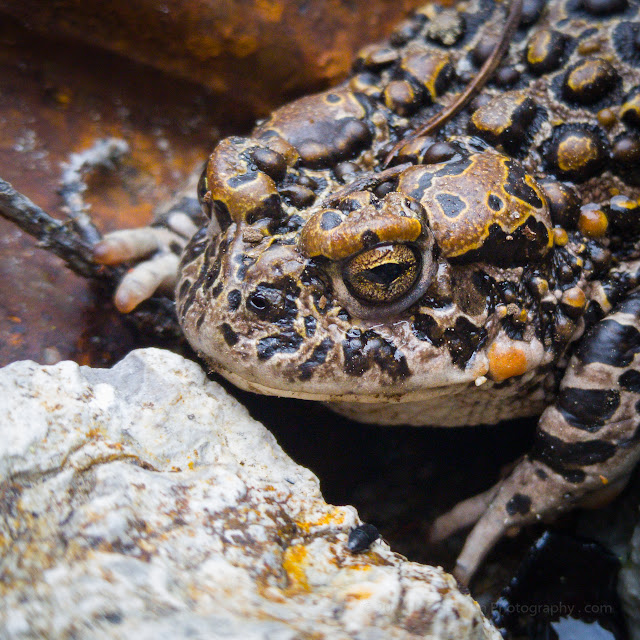 |
| LG G4 RAW capture, manual exposure, unadjusted, cropped to 2047 x 2047, saved at 90% JPG quality, Adobe Lightroom 5.7. |
I continue to experiment with manual exposure and the ability to capture images in RAW format on the LG G4 mobile phone, since it's one of the first (the first?) phone cameras to offer that capability. Above is the RAW file.
Next let's look at a copy edited in
+Adobe Photoshop Lightroom mobile on
+Android:
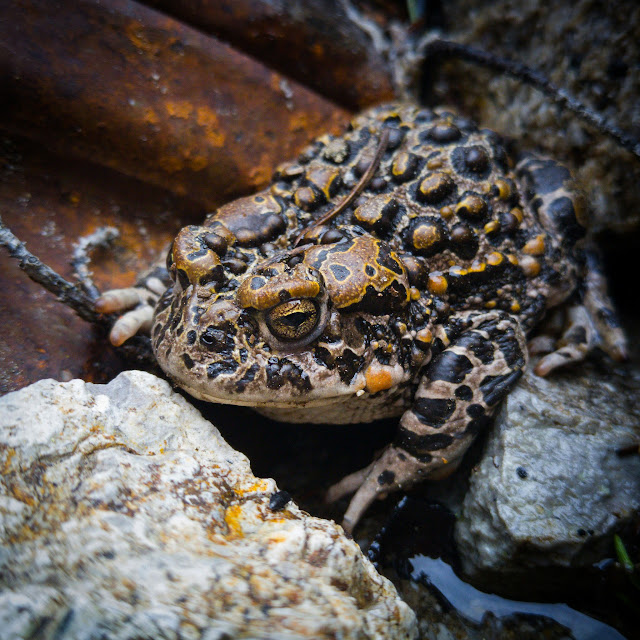 |
| Image adjusted in Adobe Lightroom mobile app, color, contrast, etc, vignette applied. |
The original files are 5312 x 2988 resolution, 16 megapixels. This was cropped square, top to bottom in the original frame, so it was 2988 x 2988, but it's displayed at 2048 x 2048 here. Looking at the Lightroom folder on the LG G4, that downsize in resolution seemed to happen automatically in the Lightroom software.
Now I'll upload the original RAW file here, saved to JPG (80% quality) so it will display:
 |
| The unadjusted RAW file was 20 MB, then saved to JPG 80% resolution it's now 6.56MB |
But guess what I was actually taking a picture of... I was trying out an 8X digital zoom on the toad's eye from about 4" away, so I could see how a macro-like the result would turn out. I was shooting in RAW + JPG mode, and this zoomed view saved at the same and with the same file name as the wider RAW file above:
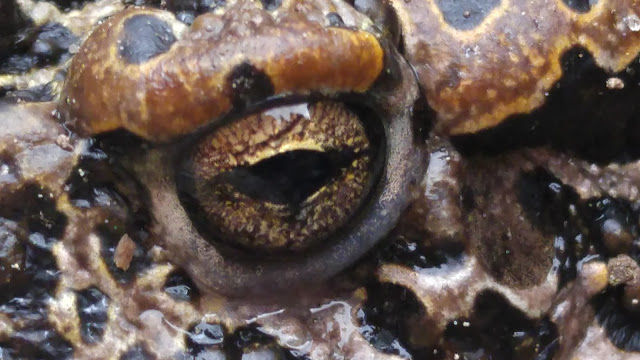 |
| 8x zoom from 4" away! (JPG file created by the LG G4 alongside the RAW image with wider field of view) |
The LG G4 has an 8-way optical image stabilizer, improved from the 4-way OIS on the LG G3. Multiply hand shake with 8X zoom, arms outstretched to ground level, a few inches from the subject, and this is an impressive result. Next I'll have to try it with the phone stationary to test the phone's close focusing and image quality without unsteady hands being a factor.
What's interesting about this 8X zoom shot is that the file still saves at 5312 x 2988. If you click on the zoomed JPG, it isn't noticeably jagged with blocks of pixels duplicated many times to the higher resolution.
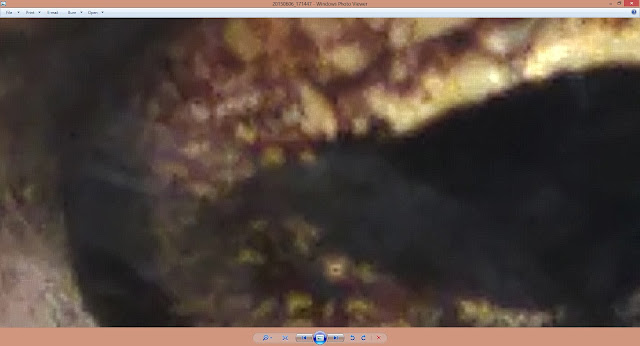 |
| Zooming in on the JPG file saved by the LG G4 |
Some of that could be dither patterns to map RAW data to the smaller color palette of 8-bit JPG, but there could be some interpolation involved to predict and fill in data as well, so let's look at the JPG save of the RAW file to see what the actual pixel size is.
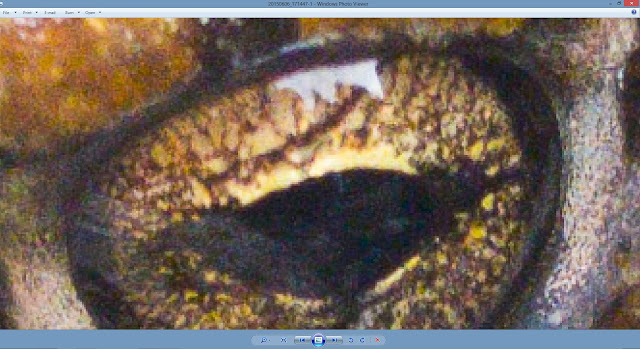 |
| Zooming in on my 80% quality JPG save of original RAW file to see actual pixel size. |
Sure enough, we were a bit over-zoomed on the LG G4's own JPG save of the 8X digitally zoomed image, but it's nice to see dither patterns (in that prior, tighter image) used to approximate more colors. that's what printers do as well, when you send them a file format with more colors than they have dots of color to represent.
But we're still not looking at the original RAW data... how much did my decision to save at only 80% JPG quality affect the output? Let's look at the file still in Lightroom, since it should be able to represent the original DNG RAW colors using the full color pallette of the display card. Here's a screen shot of that:
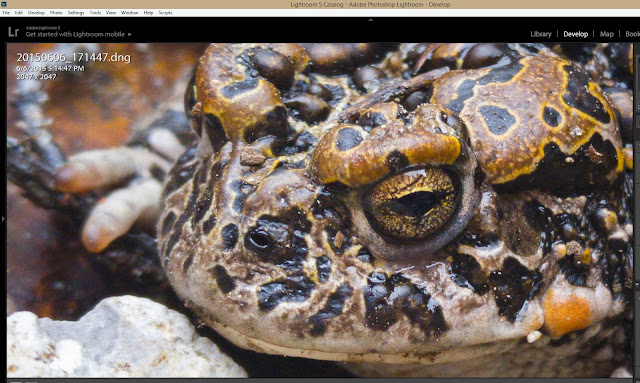 |
| Now the RAW file adjusted, this is as far as Lightroom would let me zoom on my 1920 x 1080 display. |
But screen shots are saved in JPG, so by the time someone shows that to you, you still don't get the full data present in the RAW file. Let's pixel peep on that anyway, fully understanding and acknowledging the limitations:
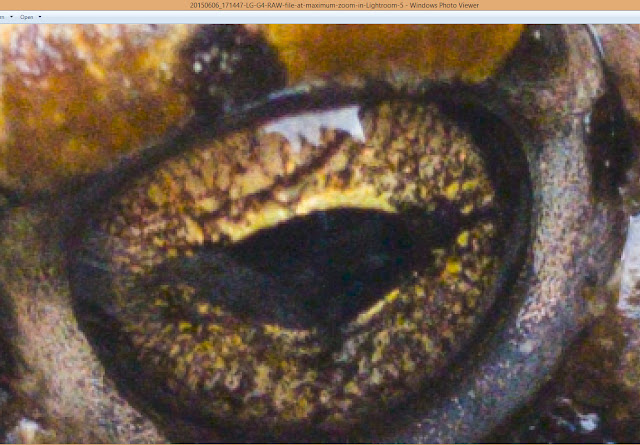 |
| This screen shot of the adjusted RAW file, as it appears in Lightroom above, was effectively converted to JPG in Windows |
The screen shot of the RAW file in Lightroom was effectively converted to JPG in Windows, but it already looks better than the RAW saved to JPG at 80% quality, so that quality setting was a factor in the prior crop. Let's now crop the eye first, then save the RAW to JPG at 100% JPG quality.
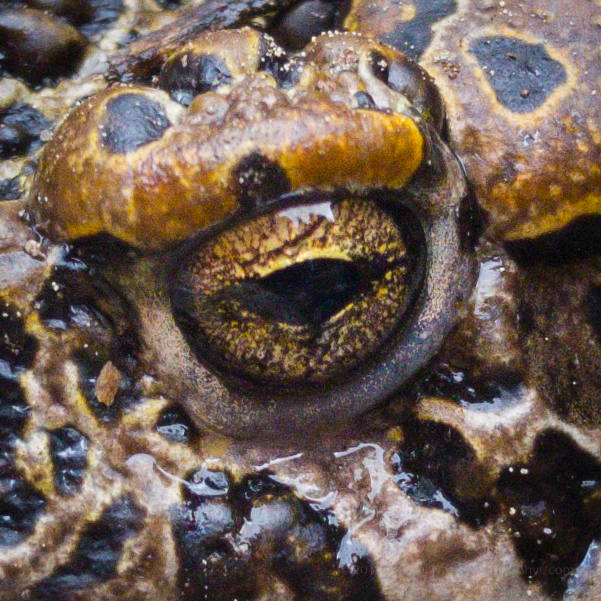 |
| RAW file cropped to 601 x 601 pixels, saved at 100% quality JPG, inserted into blog at 600 pixels |
I've cropped that last image to be inserted into the blog at a 1:1 size, not over-zoomed, and it's 100% JPG quality, so reduced in quality from the original RAW but about the best we can do in JPG format.
Let's repost that unadjusted 8X zoom RAW file that the LG G4 saved again here, for a fairly direct comparison:
 |
| That 8X zoom file the LG G4 saved alongside the wider view RAW file. |
The adjusted/edited RAW file looks better than the camera-saved JPG file, but that's the whole point of saving RAW in the first place, to have the option to work on the original sensor data and produce a better edit, if and when it makes sense to invest that additional time.
If you're on the run and need to post a quick preview, many reviews confirm that the camera on the LG G4 will produce JPG files comparable with other top phone cameras. But such reviews of straight-out-of-camera results clearly fail to fully show the full strength of the LG G4 camera, and its ability to produce stunning results, edited either in a mobile app (second from the top above) or in traditional desktop editing software (below).
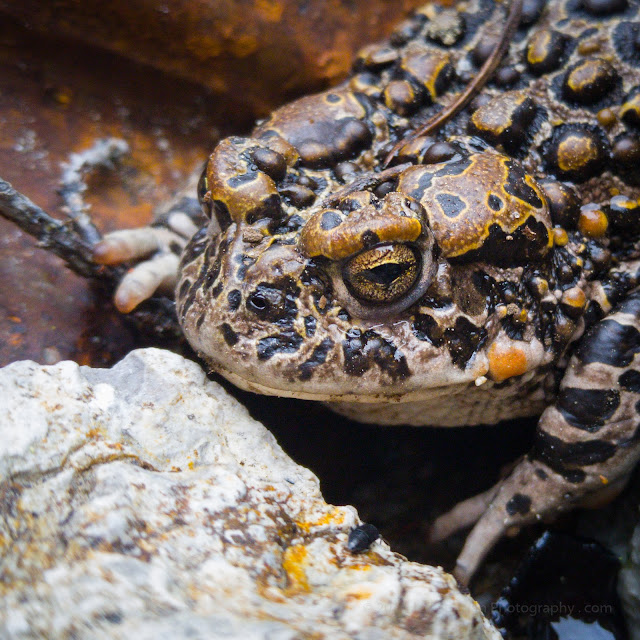 |
| Adjusted in desktop version of Lightroom (5.7), brightness, contrast, etc, less vignette applied than in mobile version |
Conclusion: RAW is clearly the way to go when quality matters, which should give the LG G4 a leg up on competitors for a while, until more of them join the RAW party.
I had been provided with the LG G4 to preview it prior to its public release, but now I have to make a personal decision on which phone to use going forward. I find that it's what I reach for 90% of the time for general image quality anyway (including low light performance, excellent image stabilization and good quality quick JPG HDRs).
Upon further inspection, the ability to select manual exposure and produce RAW output isn't just an incremental feature, it opens up a while new category of mobile phone camera. Consider what third party apps can do with that... using exposures up to 30 seconds, producing higher quality results from multiple exposures and HDR or other exposure blending performed in post-processing software. The applications will span the full range of what app developers can dream up. This starts to achieve the promise of putting mobile phones in direct competition with digital cameras and even DSLRs. While lens selection and aperture choices will continue to give DSLRs the edge for many specialized and professional applications, the expanding options and improving image quality from smartphones will continue to expand their appeal as the camera most likely to be quickest into your hand as shooting opportunities arise.










No comments:
Post a Comment